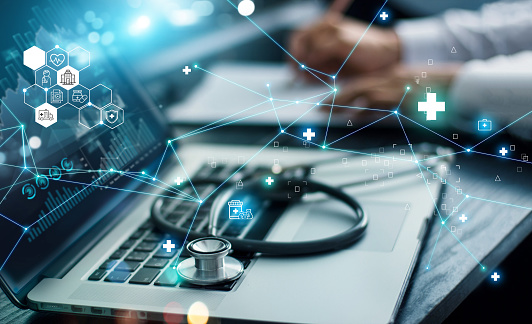The Computer Hospital – The Hospital of the Future
The computer hospital is one of the latest trends in healthcare. It combines touch screen technology and Electronic medical records with advanced computer software. Some hospitals are experimenting with virtual reality and Augmented Reality applications. They are also using servers running other operating systems. However, the biggest shift is being made to mobile devices. iPads and Android tablets are becoming popular in hospitals. And in a few years, the hospital of the future will likely be using Virtual and Augmented Reality applications.
Electronic medical record (EMR) software
Before selecting an EMR software package, it’s important to review its certification process. Certified systems meet certain requirements set forth by the Office of the National Coordinator for Health Information Technology (ONC), including privacy and security, patient data management, and meaningful use of health information. Certification ensures that the EMR software has passed the necessary testing by an authorized body. Moreover, ONC-certified EMRs meet specific criteria for meaningful use of health information, such as a place to build care plans and quality reporting.
With an EMR, providers can easily access and store patient records, reducing the chance of losing or misfiling records. They can also filter errors before they cause problems for doctors and patients. The EMR can help prevent medical mistakes and reduce the number of duplicate tests, which can be costly to both the patient and the hospital. It also allows physicians to calculate the dosage of medications and alert patients about any interactions between different medications and allergies.
The implementation process of an EMR system is customized to each clinic’s needs, staff availability, and customization requirements. It has its own timeline and a dedicated implementation specialist is assigned to the clinic to guide the clinic through the process. While there are certain advantages to using EMR software, there are still some drawbacks to be aware of.
Electronic medical records can improve patient relationships and communication. By separating routine data entry from time spent with the patient, a patient can be more engaged in their healthcare. It also helps a new healthcare provider understand the patient’s history, including medications and upcoming appointments. It also allows for a universal electronic medical record.
The implementation of an EMR requires the cooperation of both the old and new EMR provider, as well as the involvement of staff in the process. If there is a lack of communication between the two companies, the migration process could cause delays. Training is essential to easing the transition.
Electronic medical records can increase patient care and reduce medication errors. EMRs also make it possible for physicians to spend more time with patients and increase the quality of care. Physicians can also benefit from the accuracy of electronic records and the accuracy of billing. EMRs have many benefits and are increasingly popular in the United States.
Electronic medical records can be shared digitally and save time. They also offer a standardized format, which makes sharing and storing patient information easier and more secure. Additionally, they can support claims to Medicare and Medicaid. Additionally, EMRs can help hospitals and health care organizations speed up the process of care.
EMR software can help doctors improve patient care by automating administrative tasks and streamlining patient appointments. The ability to manage patient data efficiently will increase efficiency and profitability.
Touchscreens in exam rooms
Touchscreens in exam rooms at a computer hospital offer several benefits to healthcare professionals. One major advantage is the ease with which doctors can enter data and read information without taking their attention away from the patient. In addition, touchscreen monitors are easier to clean and sanitize than traditional keyboards and mice.
The other benefit is that touchscreens complement existing workflows. Physicians can easily access information they need to treat patients, and they can set the screen to ready content at the appropriate time. In addition to helping doctors stay in the moment, touchscreens can also allow physicians to spend more time discussing important details with patients.
Flexible displays are also essential for healthcare applications. Elo touchscreens are portable, allowing doctors to adjust their viewing angles and position them comfortably. They also feature a VESA mounting system that allows them to be easily mounted on a stand or a wall. In addition to touchscreens, Elo also offers a full line of display solutions. They have products for patient rooms, operating rooms, laboratories, and other settings. Elo’s medical-grade products have a range of features designed to protect private health information and sensitive administrative data.
Another major benefit of touchscreen devices in exam rooms is that they can include a keyboard, which enables healthcare providers to type more quickly than they can write. Healthcare professionals often have messy handwriting and tired hands, which can result in medical errors. A touchscreen can eliminate these problems and help healthcare workers focus more on patient care.
Touchscreens can also be used to provide patient information and reminders. These technologies are compatible with flexible software that allows departments to customize their screens for their needs. A touchscreen in an exam room at a computer hospital can be paired with a computer for a variety of functions.
Another benefit of touchscreens in exam rooms is their ability to protect patients’ health data. Because touchscreen devices are not connected to peripheral devices, they are less likely to be attacked. With the right settings, touchscreen devices can prevent patient information from being shared with outsiders. This can help prevent embarrassing disclosures about medical records.
The placement of the computer is also important. It should be positioned so that the physician can comfortably sit and work. In fact, patients tend to rate physicians higher when they are able to sit in their chairs. Additionally, hospital computers are often placed on mobile carts that adjust up and down.
Remote access to patient data
HIPAA (Health Insurance Portability and Accountability Act) privacy rules require hospital systems to protect patient data. They also require best practices for those handling protected health information (PHI). Remote access to a computer hospital’s network can jeopardize compliance with HIPAA rules. For this reason, it is important to choose an appropriate remote access protocol.
The technologies used to transfer critical patient data are the same technologies that are used in Internet environments. You are probably familiar with this because you send your credit card information to a server in another country or continent. These technologies have numerous application areas, including banking, finance, and healthcare. While these technologies are not perfect, they provide a high level of security and privacy.
In addition, remote access to PHI must be encrypted during transmission. This prevents unauthorized interception or modification. The system must also log all remote access attempts. Moreover, passwords must be stored in a secure location and protected by a firewall. This is to prevent brute force attempts to crack passwords.
HIPAA compliance is an important consideration for computer-based systems in a hospital. Remote support is increasingly available through service engineers from remote locations. Because of the high computerization of laboratory equipment, remote support is a good option. Standard operating systems have also been updated to support remote access. For example, Windows XP has Remote Desktop, which allows a remote computer to control a computer that is located in a different location.
Computer-based patient records have several advantages for hospitals. In addition to enhancing patient care, they reduce hospital costs. The use of computer-based patient records has also been proven to reduce the length of an inpatient stay. Further, a computer-based system can support users by providing complete patient data, alerts, and links to medical knowledge.
Increasing complexity of patient care data has increased the amount of information that a physician must manage. It is also necessary to share patient data with various health care providers including physicians, nurses, technicians, social workers, and dentists. Increasing acuity of illness and an increasingly complex delivery system have increased the volume of patient information.
Security is a key issue when it comes to remote access. It is essential to ensure that unauthorized users cannot access the network. Never share your password or user name with unauthorized individuals. If possible, never configure the remote access device to remember your password. If you can, make sure you have a secure connection.



